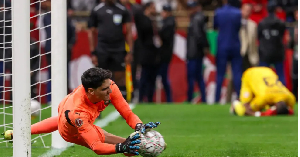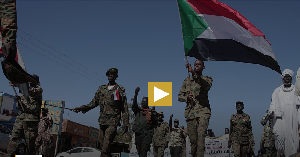Sharing a thought with the ministry of Transport, the AMA and GPRTU
I live in Rome, Italy and have travelled to several European, American and African cities. While the transportation system in Rome is not the best in the world, it operates a BRT system that I must admit is quite efficient. I was therefore thrilled when I heard that the Ministry of Transport and the AMA together with GPRTU were going to embark on an Urban Transportation Project using the BRT system. Now I hear GPRTU is not ready to back the project. I am not sure what the problem is, but it would seem that the idea to create a parallel transportation system alongside that being operated by the GPRTU does not go down well with the GPRTU. In such a scenario one will have to side with the GPRTU!
For me, it is not necessary to build a new transportation structure outside what already exists. There exists a transportation system in Ghana which has been working quite reasonably despite all its troubles. The challenge is to look at positives in the BRT system, and then see how those positives can be implemented in Ghana to improve on the transport system that already exists – that is, how do we improve the GPRTU-run transport system with the ideas of the BRT system! It is in this line that I want to offer a few humble suggestions to the stakeholders in the transportation industry.
First of all it is good to look at the positives of the present transportation system in Ghana
- It is organised under an umbrella group – GPRTU
- The vehicles are privately owned and privately operated.
- The buses cover almost every corner of our cities and the country.
- There are enough vehicles to go round – even too many!
However, there are weaknesses in the present transportation system in Ghana
- No timetable of departure and arrivals: If the bus is not full no departure. This causes delay and very hard to plan journeys.
- No strict adherence to points of getting on and getting off. Drivers stop and pick up passengers at will.
- Chaotic competition and chase for passengers by individual commercial drivers. Each driver is fighting for his pocket and how to get his daily “sales”. Consequently, five buses heading to the same place will be loading at the same time. Each tries to undo the other with unnecessary overtaking in order to be the first to get to the passengers ahead.
- Most are mini buses, so limited space and less comfort.
- There are no lanes for public commercial vehicles, so they add to the traffic chaos in their rush to do more rounds.
The positives of the BRT system
- The BRT system is an integrated system. All the buses operate together on a scheduled organised system.
- Buses leave at regular stipulated intervals. E.g. every 15 or 20 or 30 minutes. This prevents the case of sitting in a bus for hours because the driver will not move unless it is full. It also helps commuters to plan their journey.
- There are strict stop points for getting on and getting off. No chaotic competition to get passengers at all cost.
- The buses are large and so can carry more passengers.
- There are special bus lanes. So they are at an advantage during rush hours.
Now the crux of the issue
How can the BRT system improve the present city transportation in Ghana?
In my view, the Ministry of Transport should work with the AMA and the GPRTU to turn the existing transport system into a BRT system from within instead of creating a parallel system alongside the already existing GPRTU system. This can be done by incorporating some of the features of the BRT system to the present system.
Short term measures would include:
- Give all the public commercial buses and mini-buses special identification numbers and colour stripes like that of the taxis, which indicate their route.
- Establish a planned, fixed departure times at regular intervals from the station, and at the various stop points (e.g. every 15 or 20 or 30 minutes whether full or not), and stop the unnecessary competition and rush for passengers by bus drivers. Buses on the same route cannot overtake each other.
- Built bus stop points for getting on and getting off which must be adhered to strictly.
- Create a special bus-lane for them to ease traffic congestion.
Long term measures would include:
- Help the GPRTU to acquire larger buses to gradually replace and phase out the mini-buses.
- Establish an integrated bus system by turning GPRTU into a public liability company where individual bus owners become shareholders depending on the value of their bus, with possibility for others to sell and buy shares.
In my opinion, if these things are done, the GPRTU operated transport system will be transformed into a modern transportation system from within, which will be far more enduring than creating a government run parallel system that might collapse some years later as happened in previous experiments. Transforming what exists from within not supplanting from outside should be the guiding principle.
Credit: Paul Saa-Dade Ennin
Roma, Italy.
Email: saadade@yahoo.com
Opinions of Sunday, 2 May 2010
Columnist: Ennin, Paul Saa-Dade














